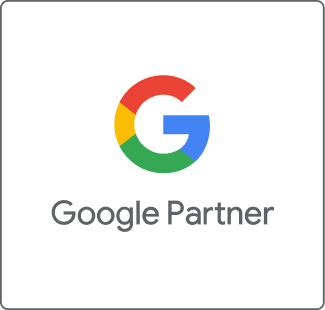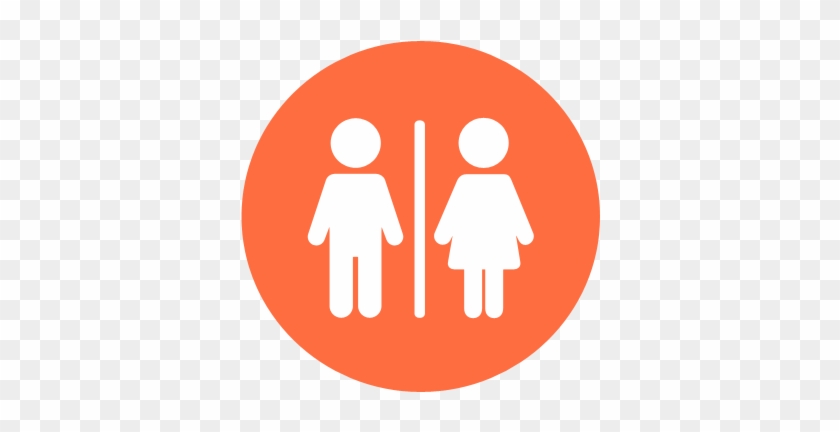Introduction
The past few years have been tough for small businesses everywhere in the OECD, particularly in New Zealand. Businesses in New Zealand rely heavily on free channels for customers and clients, have a limited marketing budget, and invest little in technologies. These factors made New Zealand small businesses especially ill-equipped when Covid hit, the restrictions of which forced the country to enact Covid restrictions, enforce mandatory lockdowns, and close its borders. Saying the effects of Covid have been catastrophic for small businesses is an understatement.
Covid has changed New Zealand’s economy. It changed the way:
- Business is conducted
- Referrals are passed
- Customers and clients behave
- Businesses reach their customers
- Business use technologies
A lot of these trends were happening far before Covid. But the pandemic exacerbated the pace, and in most cases, entrenched them to a point where ignorance is a sure way for business failure.
This article covers the top 12 ideas you should incorporate into your business development plan for 2022. Since remote working and remote connections are here to stay, it is no surprise that most of our suggestions will be digital and online-focused by nature. There are way too many daily Google searches, hours spent on social media, eyeballs on web pages and money spent online for businesses not to be meaningfully digitally active.
1. Have a Presentable Online Platform
——————————————————————————————————————————————————————————————————————————————————————————————————————————————————————–
Anyone who has owned a business for at least a little while knows that receiving referrals, attracting leads and making connections for a business is a multi-faceted endeavour. But a vital part of this endeavour is creating an online platform for your business that:
- Impresses clients and customers
- Makes the competition envious
- Installs trust, confidence in potential customers and clients
- Commands respect in business networks
You may ask, what does it mean to have a presentable online platform? In general, this means:
- A purposeful website – a website is a brochure for your business on steroids. A website should:
- Showcases the best your business or company has to offer
- Communicate the business’s brand identity
- Have a clear call to action to convert traffic into leads
- Serve as the foundation to reach and connect with other online platforms
- Give a company the grounding it needs for online advertising
- Business social media accounts – by social media, we mean Facebook, Instagram and Linkedin. But as a business owner, you should stay up to date with the latest up and coming social media platforms. In most instances, having an active business social media presence enables:
- Further trust by customers and networks in your brand, services and products
- Accurate data to launch Facebook and Instagram advertising – Facebook and Instagram advertising often is as important as Google Ads
- Spurring interest in your business’s services or products
- Increasing brand awareness
- Hosting online events, presenting to your network and hopefully getting some leads
2. Interconnected website, social media and LinkedIn
——————————————————————————————————————————————————————————————————————————————————————————————————————————————————————–
This is a stretch from point 1, but worth noting. The whole point of your business having a website, social media accounts, and perhaps even a YouTube channel is for the platforms to strengthen each other and elevate your business. This helps the businesses credibility and SEO. Therefore ensure that:
- You have relevant icons on your website homepage
- The icons are connected to their platform
- Clients and customers can reach you on all your online platforms – whether the contact us form on a website or the message me option on a business Facebook page.
3. Budget a few hours a week to learn digital tools
——————————————————————————————————————————————————————————————————————————————————————————————————————————————————————–
One of the main points your business has a website, a Facebook page, an Instagram account, and a Linkedin profile is to collect data on audience interaction. This is then used to iterate the business, its services, and communications. The main tools to use here are:
- Google Analytics
- Google Analytics 4
- Google Search Console
- Google Ads Manager
- Google Data Studio
- Facebook Business Manager
These tools provide vital metrics such as the website’s bounce rate, conversion rate, the performance of an ad campaign, a website ranking for keywords and the improvements or regression of these metrics over time.
Spend a few hours of a week looking at tutorial videos and familiars yourself with these tools. It is vital and super crucial for your business survival. Remember, the aim here is not to become a pro in any of these tools but to know your way around them. As your business grows, becomes more active in the online space, relying on organic leads and online traffic data, you are going to either:
- Use these tools to grow your website and thereby your business; or
- Hire a digital marketing agency to use these tools and help your business. It’s a lot easier if the tools are already set up.
By knowing these tools, when and if you hire a digital marketing agency, you will ask better questions, have more informed meetings and press your consultants for better results. This is a better outcome for a business than telling a digital marketer, “I want a website and other stuff that might help; here is a blank check, and let’s hope it works out“.
Remember, the aim is not to become a pro or a savvy digital marketer but to be informed and know what’s happening in the digital space where it concerns your business.
4. Virtual events
——————————————————————————————————————————————————————————————————————————————————————————————————————————————————————–
Familiars yourself with virtual events. One of the more popular platforms for virtual events is LinkedIn. You may recall seeing LinkedIn posts about a connection hosting a free tutorial session or webinars. These are essentially advertising channels where the audiences learn about the trade of the presenter and relevant information related to the audiences businesses. It’s a win-win: there is no obligation to buy, and the presenter potentially gains a few leads from the event.
Virtual events aren’t relevant to every industry, and some business owners may not be comfortable with the camera and presenting. We suggest being aware of virtual events, reading on them, and perhaps watching some online courses. It may not be a high priority at the moment, but you should be familiar with its basics and cornerstones. Most likely, virtual events will come in handy in your business’s future, especially if the business grows fast.
5. Google Ads or Online advertising
——————————————————————————————————————————————————————————————————————————————————————————————————————————————————————–
Huge and established companies are spending hundreds of millions of dollars on Google Ads – meaning Google Ads is not a fad or a gimmick, and market forces suggest genuine business value in Google Ads.
Google Ads cost depend on the keywords’ current bids relevant to your business. The higher the volume for those keywords, the higher the competition and the higher the bid price. Google generates a monthly estimated budget based on:
- The volume searches for keywords;
- The estimate clicks a given website will receive;
- Cost per click
If implemented correctly, Google Ads is a gold mine for sales and lead generation. But to harness its power, a business website needs to be well optimised, user friendly, with a polished product. The advertising budget will be wasted if a business hasn’t completed the groundwork for Google Ads.
Here is a goal for 2022, optimise your business as if you’re going to start a Google Ads campaign. The process will polish your website, product and business strategy.
6. Video marketing
——————————————————————————————————————————————————————————————————————————————————————————————————————————————————————–
If you are camera-shy, it’s an excellent time to overcome it. Viewers prefer someone genuine in front of the camera rather than a sleek talking salesperson. This is the era of YouTubers, where audiences are used to productions, recordings and streamings having humble starts.
Your videos can be used on a website, YouTube channel, Instagram, or Facebook page. Here is a fun fact, around 53% of consumers say that watching videos persuades them in making buying decisions online.
Video content is also a massive boost to websites’ Search Engine Optimisation (SEO). Google’s algorithm prioritises web pages that include videos because people prefer to consume information and content via watching videos. A website with videos is 50 times more likely to generate organic results. This is an SEO score that is very hard to accomplish without video.
When in doubt, note that video content is especially effective for small businesses, and don’t worry about underproduction. Just produce videos and, over time, increase their qualities.
7. Personalised marketing
——————————————————————————————————————————————————————————————————————————————————————————————————————————————————————–
The major impact influencers and YouTubers have made in marketing is to make people and audiences appreciate individual style, approaches, and taste to marketing. What does this mean for a small businesses owner? Emulate what successful competitors are doing, but don’t be afraid to add your taste, style, and preference to your marketing material. Customers and clients like organic genuineness as opposed to businesses who always stick to orthodoxy.
8. Brand identity
——————————————————————————————————————————————————————————————————————————————————————————————————————————————————————–
It’s not rare for brand identity to be confused with logos – especially at the inception of a business.
A logo is a design used on websites and letterheads. Brand identity is the brief of design language you have incorporated that guide the creation of all marketing materials, presentation and any material connected to your business. The idea is, brand identity defines and particularises the collection of elements that a business uses to portray the image it wants to its consumers. This makes changing graphic designers a whole lot easier.
If your business is still in its infancy, its identity is still a soft cement – you’re still discovering the main clients for the business, the correct demographics, and a fine-tuned product for your business. So don’t be too hasty in spending a significant amount on designing a brand identity – chances are, you’ll want to change it in six months.
9. Industry contacts
——————————————————————————————————————————————————————————————————————————————————————————————————————————————————————–
Industry contact is excellent for getting clients and job referrals. An example that comes to mind is my kitchen installer. He owns a humble business that installs kitchens and bathrooms. The business does not have a website, and the only way to reach it is by calling the owner’s mobile number. He was referred to me by the local hardware store where I purchased my kitchen cabinets. The hardware store is one of the biggest chains in the country, and they refer hundreds of customers to this kitchen installer person.
This shows that you do not need to have a high flyer prestigious business to gain the kind of contact necessary to have work referred. In most instances, all you need to do is Google local networking groups, join as many as you can, participate and see where each group leads. Most of these groups are subscription-based, and some are free. In either case, it’s something well worth your while.
Don’t be discouraged if the first few meetings turn out to be duds. It’s part of the learning process. The principle is to spend a few hours a week networking, directly or indirectly. You never know when and where you may meet a significant industry player who needs a reliable person to refer customers to.
10. Know the Sales Funnel inside out
——————————————————————————————————————————————————————————————————————————————————————————————————————————————————————–
Know the sales funnel inside out! The sales funnel gets repeated enough when businesses dangle their toes in Facebook and Instagram advertising. But the concept applies to all facets of a business engaging in brand awareness, drawing in leads and converting those leads into sales of any type.
The definition of a sales funnel is the process of a prospect’s first contact with your business until a completed purchase. It’s depicted as below in a general context:
At the top of the funnel, your goal is to attract people to your business – brand awareness or attracting prospects to your brand. This could mean posting images, videos, and or helpful blogs on behalf of your business in a digital marketing context. Remember, you’re not trying to sell but spread awareness.
Once prospects know your business, company or brand, your goal should be to build interest and appeal to them. Here prospects give you brand “consideration”. This could mean something as simple as providing free content to capture the email. At this stage, you are essentially remarketing to the same audience.
When you arrive at level three (3), where prospects are ready to purchase, your efforts are at the top of the funnel have paid off, pun intended. You’ve built trust and confidence with customers.
There is a lot of literature on the sales funnel and its applications to different channels like digital marketing. In particular, there are a few nuances with the sales funnel that you should be aware of, like audience fatigue – where you’ve overadvertised to a prospect, and they are no longer interested in your brand.
Essentially, as a business owner, you must do a bit of research on the sales funnel and adapt it to your marketing strategy to develop a good idea as to where each prospect or lead is in the funnel. This will dramatically increase the chances of turning leads into sales and retaining future business from those leads.
11. No SEO is building a castle in the desert
——————————————————————————————————————————————————————————————————————————————————————————————————————————————————————–
If you have a business, chances are you have already been approached a dozen or more times by SEO specialists offering to optimise your website. We have an article here that defines and discusses SEO .
Think of your website as a castle. You have spent money, time and effort building, updating and polishing it. The primary purpose is to give prospects, audiences and viewers a presentable and trustworthy front to your business. However, the whole exercise of website development becomes a little pointless if it’s not attracting new traffic for brand awareness, leads, conversions and sales. This is precisely what SEO does. SEO specialists goal is to increase a website’s organic traffic. In simple terms, this means optimising a website so that:
- Google recognises that website’s relevance to search phrases related to the site’s business or trade
- It increases its rankings over time in Google search results – i.e. it appears higher and higher. Assume rarely anyone looks past the first five pages of a Google search. So if we have a website that ranks in relevant searches but does not appear in the first five pages, it will be impossible for audiences to discover your site organically on a search.
So the conclusion is to know a little about SEO, and if you have a website, budget for an SEO specialist. You may not need an SEO expert today, but it’s for sure a needed service in the future to help your business grow.
12. Smart speakers & voice search
——————————————————————————————————————————————————————————————————————————————————————————————————————————————————————–
This is related to SEO. A considerable part of the cost of SEO is having your website rank higher for shorttail keywords. However, thanks to the rise in popularity of voice searches, longtail keywords are quickly becoming just as valuable in lead generation as shorttail keywords.
People are lazy to type their search queries in full, but we are far more likely to ask long questions from a voice assistant. This leads to a golden opportunity for cost effect SEO – why aim to optimise for shorttail keywords when longtails like questions take less effort to rank higher for? Moreover, the traffic generated from longtail keywords is likely to be ready to buy or in the market to hire someone.
We’ll leave you with a cool stat: 50% of searches carried out in 2020 were by voice, and this is a sharply growing trend.
Conclusion
——————————————————————————————————————————————————————————————————————————————————————————————————————————————————————–
No doubt, there is a lot to learn and experience as a small business. There is always the struggle of whether to hire someone to do it or do it yourself. Regardless of how you answer these questions, It is well worth being familiar with the points discussed above.
Either you learn super quickly and save money by doing yourself what’s discussed above, or you hire someone to do it. In the latter case, knowing these points means you’ll have informed meetings and hire the best person for the job instead of being swept away by a sleek talking salesman.



 Listed on Hotfrog New Zealand
Listed on Hotfrog New Zealand